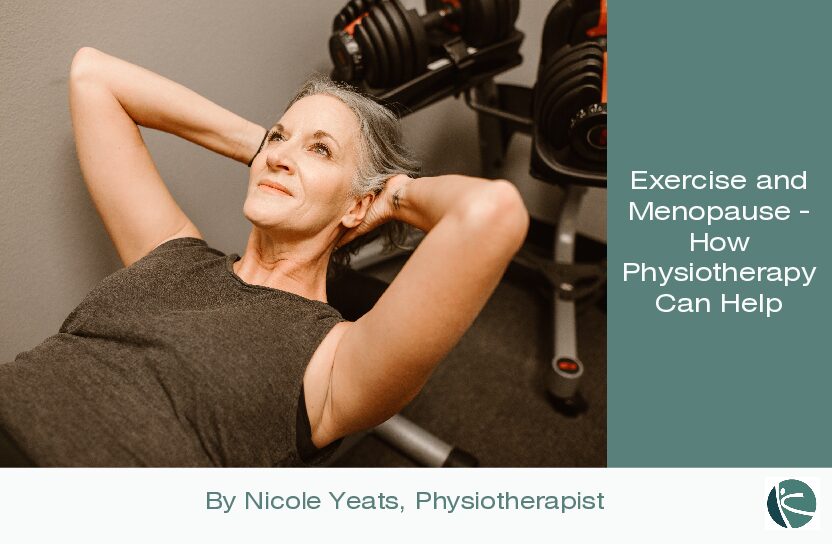Exercise and Menopause - How Physiotherapy Can Help
Menopause is a natural part of every woman’s life. It marks the end of a woman’s reproductive years, and it’s often accompanied by several symptoms that can be both physically and emotionally challenging. While many women experience this transition without any major complications, others experience symptoms that can disrupt their lives. Appropriate exercises and movement can go a long way in managing menopause symptoms. Fortunately, physiotherapy can help guide women in prevention or rehabilitation of injuries that may be sustained due to post and perimenopause factors.
Physiotherapy is a type of healthcare that focuses on relieving pain and restoring function to the body. It involves using education, movement, exercise, and manual therapy to promote healing, reduce pain, and prevent future injuries. In the context of menopause, physiotherapy can be incredibly helpful in educating women on what are optimal exercises to perform through menopause. As well as managing symptoms such as joint pain, muscle weakness, and decreased flexibility.
Strength training is an important component of physical fitness for menopausal women. Isometric exercise is a type of strength training that involves holding a muscle in one position for an extended period of time, rather than contracting and relaxing the muscle. These types of exercises can help build strength without putting too much stress on the joints and tendons. Building strength can also help improve bone density, muscle mass and cardiovascular health, all of which can decline during and after menopause.
HIIT (High-Intensity Interval Training) is a form of cardiovascular exercise that alternates between short, intense bursts of activity and brief periods of rest or lower-intensity exercise. HIIT workouts are designed to be short but very effective in burning calories, improving cardiovascular fitness, and building muscular strength. HIIT can improve insulin sensitivity and lower blood fasting glucose which may be especially hard to manage during menopause. It can also help with fat burning capacity, especially visceral fat (abdominal fat), which tends to increase during menopause.
Hormonal imbalances during menopause may lead to a higher risk of injury, particularly in women who are not physically active. With appropriate exercises women can increase muscle mass and normalize bone density to help to minimise injuries. Physiotherapy can help guide women in preventing and managing injuries related to these hormonal changes.
In addition to rehabilitation, prehabilitation is an important component of physiotherapy for menopausal women. Prehabilitation involves starting an exercise program before an injury occurs. This approach helps to build strength and improve flexibility, which can reduce the risk of injury over time. It can also help women prepare for the physical changes that occur during and after menopause.
Menopause is a natural part of life for all women, but it’s important not to underestimate the symptoms that can accompany it. Appropriate exercises and movement are an important component to deal with some of the symptoms that may be felt. Physiotherapy can help guide in prevention or in rehabilitation of injuries that may be sustained due to post and perimenopause factors. Don’t let menopause hold you back from living a full and active life, seek the help of a physiotherapist today.


Recent Comments